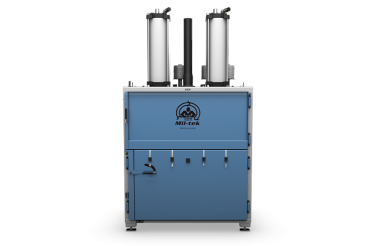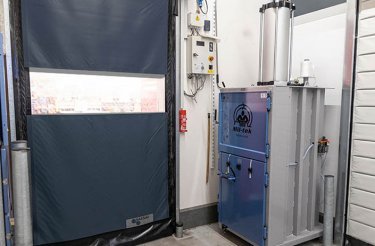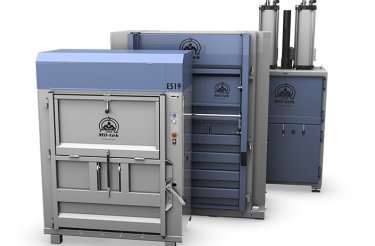
The operation of a cardboard baler
A straightforward explanation of how cardboard balers function in the workplace.
Balers for cardboard are useful
If you operate a business that deals with any type of packaging, you likely generate cardboard waste.
If so, a cardboard baler can be a very useful addition that not only makes the workplace cleaner and safer, but also benefits the environment.
Although there are a variety of shapes, sizes, and types of cardboard balers that are tailored to specific business sectors and industries, they all perform the same fundamental function: they compress cardboard into a smaller volume so that it can be moved, collected, and recycled more easily.

How a cardboard baler works
The following is a comprehensive, step-by-step explanation of how a cardboard baler operates:
- Connect the baler to a power supply. Whether it’s a hydraulic baler or a pneumatic baler, you will need a suitable power source.
- Ensure that the operator is either a trained staff member or that a trained staff member is present.
- Load the cardboard into the baler’s chamber
- Once the chamber is full, close the main door and pull the activation switch
- This activates the baler’s ram, which presses down the cardboard
- For safety reasons, EN16500-compliant balers allow no access to moving parts
- Repeat until the cardboard inside the chamber forms a compact bale and the machine indicates that it ready to be emptied
- Tie off the resulting bale using appropriate banding
- Empty the baler through either a manual or automated bale-out mechanism
- Stack and store the cardboard bales which can be collected by a recycler
Different sizes and types of cardboard balers
Hydraulic cardboard balers are typically large, whereas pneumatic cardboard balers are typically smaller and recommended for applications involving lighter loads and leaner production.
Small-footprint cardboard balers can compress approximately 35 kg of cardboard, whereas balers for large factories or warehouses can store up to 500 kg of cardboard.
Moreover, horizontal balers process vast quantities of packaging materials. There are also balers that operate with both cardboard and plastic.
Cardboard balers are durable, simple to operate and maintain, and require minimal staff training.

Numerous baler options
There are numerous models and brands of cardboard balers, and while they all perform the same function, their operation varies.
Always ensure that you and your co-workers have the proper training or certification (if necessary) to operate the apparatus. If uncertain, consult the user manual or contact the manufacturer.

Do you have any further questions?
By managing waste more effectively, your company may save time, space, and money. Let us assist you in finding the solutions.
Once you submit the form, one of our local employees will contact you to offer assistance.